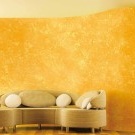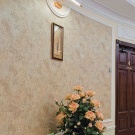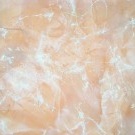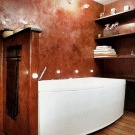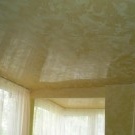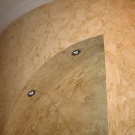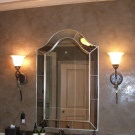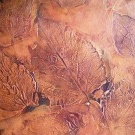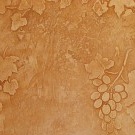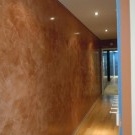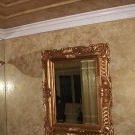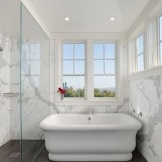Decorative Venetian plaster: application technology and photos in the interior
Venetian plaster gained its popularity back in the distant Renaissance. The material has a transparent appearance and consists of many components based on lime and marble flour. Venetian plaster in the hands of an experienced craftsman resembles a real work of art and can decorate any interior. Modern Venetian plaster has a transparent appearance and after a special application technique creates the effect of marble. A similar shade is achieved due to the composition, which, most often, includes water emulsions, slaked lime and marble flour.
The material gets to store shelves in buckets or banks of 7-25 kg each in the form of a transparent thick mass. An important advantage of the material is the ability to tint in almost any color. By the way, the surface is more similar to marble and looks better when several (2-3) shades of the same color are mixed.
How is the depth and transparency achieved during application?
A similar effect is achieved using a special application technique in which the material is applied in small strokes from four to ten layers. To do this, use a triangular spatula made of forged stainless steel. Then the dried plaster is covered with beeswax, which has a special transparency and protects the decorative coating. Wax is a very important element, because even a masterpiece can be easily spoiled by coating it, for example, with matte wax or regular varnish. Although today there is a Venetian plaster, which already contains similar materials and does not require a finishing procedure.
Benefits of Venetian Plaster
- creating the effect of marble mosaic. Such a picture, combined with a rich color scheme, is capable of betraying the interior a truly masterpiece look;
- Water resistance is considered one of the main advantages of the material. The surface is easily washed with detergents (water, soapy water) that do not contain solvent;
- the material is very durable, because only the guarantee is from 5 to 10 years;
- possesses high wear resistance;
- environmentally friendly;
- does not emit a smell;
- fireproof;
- dry quickly.
Venetian plastering technology
First of all, you need to know that the working surface on which the material is applied must be perfectly smooth, dry and clean. This is due to the fact that even the most minor defects will be visible through a thin layer of plaster.
- Work begins with the application of a primer or acrylic paint on the surface in several layers;
- After drying the primer, you can proceed to the direct application of the material.
- The working surface should be divided into sections of 0.5-1 m2 and perform the following operations:
- Apply strokes (you can even have different colors);
- Level and smooth over the area;
- We polish the surface.
- Apply the plaster very carefully with a spatula, layer by layer. In this case, each layer must dry, after which, to eliminate defects, it is cleaned.
- The first layer is the base and is applied in a continuous layer to the surface. This is necessary in order to set the tone and level the surface.
- All subsequent layers are designed to create patterns, drawings and other effects. How to do it? Using a flexible steel spatula, it is necessary to draw short strokes, after which the wall will resemble a leopard skin. Now it is necessary to impose one more similar layer, then another and more. This is done before the "spotting" is barely noticeable and will more resemble the play of light and shadow.
- The work must be fixed with a finish layer of wax.For this, both natural and synthetic wax can work. At the same time, natural wax gives the surface a glossy look, and synthetic wax - waterproof and matte. It will be appropriate to use in wet rooms (bathroom, pool, etc.). It is better not to use the varnish, the surface may become cloudy from it.
- After applying the last layer, wait 20 minutes and clean the surface in a circular motion with a soft rag.
- As we mentioned above, it is better to use different shades of the same color when working. For example, the first, second and third layers should differ in tone, be slightly lighter or darker.
When working, it is worth considering several nuances. Firstly, at the beginning and at the end of the smear application, the pressure on the trowel should be weakened (as during scraping), while the layer thickness will change. Secondly, work is being carried out from one site to another: finished on one - moved on to another. When you start leveling and polishing, you need to slightly hook on the borders of neighboring sections. When applying the Venetian plaster, practice plays a decisive role, it is better to practice in advance. The surface will completely dry in a week, but the room is suitable for housing in a day.


